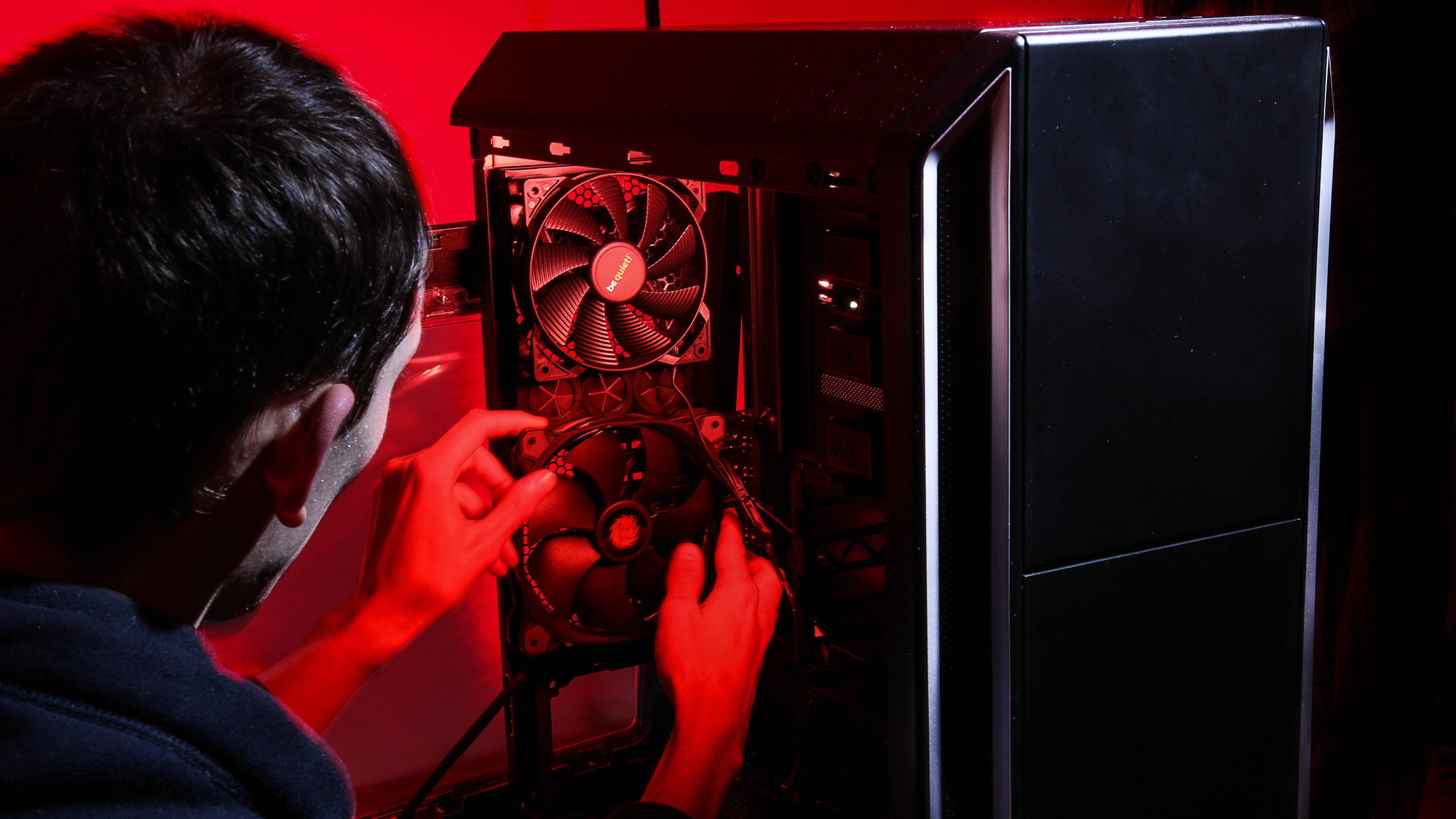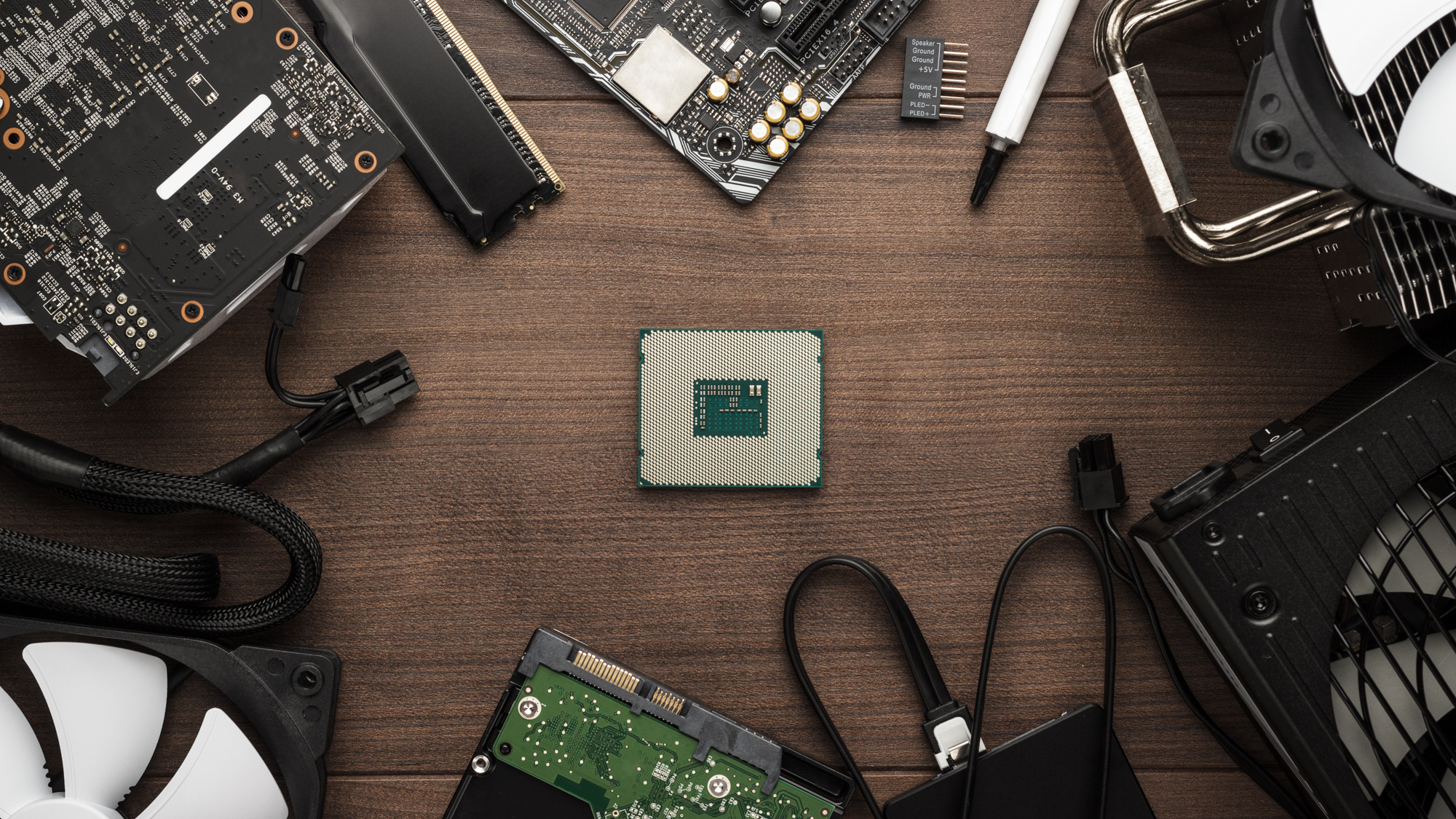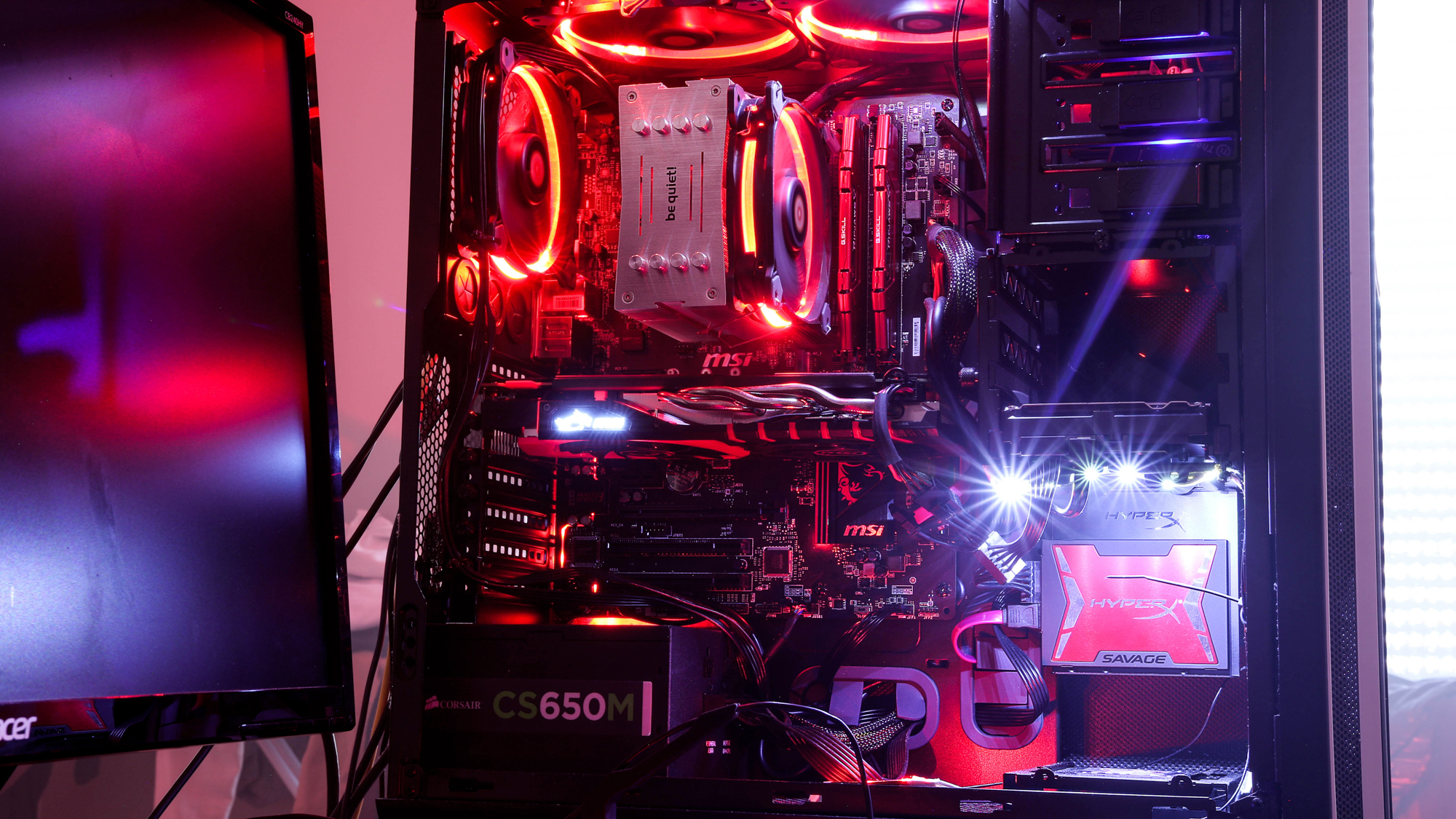How to build a gaming PC for beginners: All the parts you need
The first step to building a gaming PC is selecting the right components

Building a gaming PC is arguably the best technological investment you can make. A quality gaming rig lasts longer than a smartphone, boasts more power than a gaming console, and is infinitely more versatile than even the most powerful streaming box. Whether you’re typing up documents, editing video or cranking up the settings on the latest and greatest games, a gaming PC is the best tool for the job. With regular maintenance, one of these systems could last five years — with regular upgrades, maybe ten.
Still, building a PC can be a daunting process, particularly for newcomers. There are plenty of good guides out there, particularly from our sister sites like PC Gamer and Tom’s Hardware. However both of these stories focus a lot on mechanics: what components you need, and how to fit them all into a motherboard. Before I built my first PC, even these guides would have been a little daunting.
Tom’s Guide has decided instead to split the process into two parts and take a more experiential tack. Before you build a PC, you need to decide why you want to build it. What do you want that you can’t get from a prebuilt machine? Which parts will facilitate that goal? And how can you make sense of the hundreds of different tech specs between the half-a-dozen different pieces you’ll need?
With that in mind, the first part of our “How to build a PC” series focuses on picking parts. In a broad sense, we’ll cover the hardware that makes a PC tick. But I’ll also discuss my thought process behind each part, and what tradeoffs I was willing to make.
The basic parts
Before I lay out my thought process behind each part, there are, at minimum, seven parts you’ll need to build a gaming PC:
Graphics card, or GPU: Arguably the most important component in a gaming rig, the GPU (graphics processing unit) renders images from your PC and puts them on your monitor. More powerful GPUs facilitate better in-game graphics and settings.
- Max out your connection with a gaming VPN

Processor, or CPU: More so than any other component, the CPU (central processing unit) is what makes your computer run. The CPU routes instructions from one system in your computer to another. The better the processor, the faster it can transmit information for both software and hardware functions.
Sign up to get the BEST of Tom's Guide direct to your inbox.
Get instant access to breaking news, the hottest reviews, great deals and helpful tips.
Motherboard: The motherboard is where all the hardware in your computer lives. The most important thing about a motherboard is its compatibility with the parts you choose, but motherboards can also have integrated graphics cards, Wi-Fi systems and more.
Memory, or RAM: RAM (random access memory) determines how much data your computer can process at any given moment. To oversimplify things considerably, RAM is where your computer stores information it needs to access right away. The more RAM you have, the more efficiently your computer can process lots of information — helpful for productivity; essential for games.
Storage, or SSD/HDD: PC storage essentially comes in two flavors: Solid state drives (SSDs) and hard disk drives (HDDs). Either way, it’s where your files live when they’re not in use. Bigger drives mean more storage space, which means more room for files, games, media and so forth.
Power supply: Possibly the least interesting and most vital piece of the PC puzzle, the power supply is exactly what it sounds like: It gets electricity from an outlet to individual systems in your computer. Picking the right one can be tricky, but once you do, you’ll probably never need to think about it again.
Case: Your computer case is, for the most part, an aesthetic choice, although some models include fans for additional cooling. While it’s possible to do an “open-air” build, a case is probably a better choice for keeping dust out and components sheltered.
Anything else, such as additional cooling systems or secondary hard drives, are nice to have, but not strictly necessary. These are the parts you need to go from a pile of hardware to a functioning PC.
Conceiving a machine
Like any creative project, the hardest part about building a PC is getting started. There are literally thousands of possible components; where do you even start? Do you pick a GPU and build around it? Find a case you like and see what will fit inside? Scour Newegg for whatever’s on sale and hope it all fits together?

Believe it or not, those are all viable build strategies, but mine is a little simpler: Figure out the “why” first, and the “what” will follow. What kind of PC do you want to build? Do you want a productivity machine that can play some games on the side? A more versatile alternative to the next-gen consoles? A high-priced powerhouse to last the ages?
Personally, I need to build a new machine because my current gaming rig is 10 years old. This wasn’t a big issue when I had a more powerful PC in the Tom’s Guide office for game and peripheral testing. But due to the pandemic, I’ve been working from home for the last few months, and the old workhorse isn’t cutting it anymore.
As such: I need a computer that can run the latest games smoothly, but I don’t necessarily need to crank everything up to 8K resolution and 120 frames per second. I also need something that will be at least as powerful as the PS5 and Xbox Series X, in case I need to compare games across platforms.
After doing some research, I found that $1,500 tends to be the sweet spot for a PC that’s powerful, but not quite top-of-the-line. I already have a mouse, keyboard, headset and monitor, so those didn’t factor into my budget. You’ll have to figure out what you’re comfortable spending and factor in your own peripherals, but knowing exactly what you want your PC to do will help a lot.
How to shop for parts
From there, I went to Newegg (the best place to buy PC components online, in my experience) and started looking for components. Remember: You can’t just buy the first seven parts you see and expect them all to fit together. It’s best to start with the most important component (in my opinion, the GPU) and work your way down.

Obviously, Newegg is just one place to shop. Once you find the gear you need, you can bargain hunt at Amazon, Best Buy and other big electronics retailers. My personal favorite is Micro Center, especially if you have one of these electronics meccas near you. You could very conceivably walk in with nothing and walk out with an unbuilt computer, at a very reasonable price.
When possible, buy gear from established, known brands — Corsair, HyperX, Western Digital, and so forth. You could theoretically save a lot of money by going with no-name storage, RAM or power supplies. But device quality is a total crapshoot, and customer service in small brands tends to be either haphazard or nonexistent.
My last piece of advice is to be somewhat flexible with your budget, if possible. Obviously, you don’t want to spend $1,500 on a $1,000 concept, but don’t throw the whole build out if it comes to $1,050. A good PC will last a long time, and a few dozen dollars make very little difference over the course of a few years.
GPU: Nvidia GeForce 3070 - $500
As mentioned above, the GPU is the most important (or at least the most straightforward) place to start with a gaming PC build. The first big choice you’ll have to make is between Nvidia and AMD, each of which produces high-end graphics cards. The pros and cons of each is probably worth its own article, but in my own PC builds, I’ve had good luck with Nvidia and bad luck with AMD, and going with brands you trust is one of the best strategies in this process.
From there, it was just a matter of selecting one of Nvidia’s three new cards: the GeForce RTX 3070, 3080 or 3090. Because I had a $1,500 budget in mind, the Nvidia GeForce RTX 3070 was the natural choice. The other two cards would have eaten up too much of the cost. Buying older cards can save you some money, but makes your machine less future-proof.
It's worth mentioning that at the time of writing, the RTX 3070 is still a few weeks away from release, and it's probably going to sell out quite fast. If you absolutely, positively have to build something now, you could go with the older Nvidia GeForce RTX 2080 series, which is currently dropping in price, or the similarly powerful AMD Radeon RX 5700 XT. However, AMD will also release a new GPU (the Big Navi) shortly, so it's probably best to just be patient and catch a restock.
CPU: Intel Core i7-10700 - $320
When I ran my proposed build by the Tom’s Guide crew, the CPU was easily the most controversial selection. The Intel Core i7-10700 is a powerful CPU, and while it’s not absolutely top-of-the-line, it’s a good match with the GeForce 3070 GPU. However, it was a tough call between the 10700 and the 10700K. The latter is only a little more expensive, but you can overclock it — a huge boon for a gaming PC.
In the end, I settled on the 10700, because the 10700K would have caused sort of a pricing cascade. While the 10700 comes with its own cooling unit, the 10700K doesn’t, and a good cooling system would tack another $100 or so onto the price. Furthermore, overclocking draws more electricity, which might have required a bigger, more expensive power supply. Overclocking isn’t really necessary for testing games and peripherals, so the 10700K wouldn’t add much to this build.
RAM: HyperX Predator DDR4 32 GB, 3200 MHz - $145
RAM is a tricky topic, since there are a lot of variables at play. You can get between 16 GB and 128 GB of memory, and between 3000 and 4800 MHz of speed. Naturally, higher memory levels and speed cost more money.
Generally speaking, more memory is better than less, so I went with 32 GB — twice what the PS5 and Xbox Series X will offer. RAM speed is less important. Higher numbers are generally better, but not every system can leverage higher RAM speeds perfectly, so don’t sweat it too much.
Storage: WD Blue NAND 2 TB SSD - $230
Another point of disagreement among the TG staff was whether to buy a large SSD, or a small SSD for Windows and a large HDD for game storage. Without going into too much detail about the relative pros and cons, I eventually decided that the PS5 and Xbox Series X will both use SSDs exclusively; why build a PC that’s less advanced out of the gate?
There was also the question of whether to buy two SSDs: a small one just for system files, and a larger one for games. The benefits from this setup tend to be limited, however, and it increases the overall system complexity.
Motherboard: MSI MPG Z490M Gaming Edge - $180
Depending on how you build your machine, the motherboard may be either the first or last component you choose. My strategy was to choose my GPU and CPU first, then find a motherboard that would support them both. I also knew I wanted a motherboard with Wi-Fi built in, since my computer desk is far from my router. I decided on a full-size ATX design, because it’s easier to fit components inside. (There are also mini- and microATX motherboards, and you can do some very cool things with them, but they can be expensive and difficult to put together.) The MSI MPG Z490M Gaming Edge was the cheapest motherboard I could find that met my specifications.

To check compatibility with the parts you’ve selected, look at the “Specs” section on a given motherboard (every site should have something like this), and ensure that all the inputs match up. It’s harder than it sounds, but truthfully, this is a skill you’ll have to develop if you want to build a PC. If you have any concerns, try Newegg’s PC Builder tool, which helps ensure compatibility. Alternatively, consult Reddit or Tom’s Hardware, both of which have “critique my build” options in their forums.
Power Supply: Corsair TX-M Series TX650M - $110
A common meme in PC-building communities is a power supply as a ticking time bomb. And they’re not wrong: If there is one component you really, really don’t want to mess up, it’s this one. The best-case scenario is overheating your components and burning them out well before their expected lifespan. The worst-case scenario involves a fire extinguisher.
You’ll have to do a little legwork to determine how much power each component of your machine draws, add it all up, and choose a power supply that offers more than that by a comfortable margin. But if you get a truly enormous power supply, you’ll be spending a lot of money for power that you never use, so that’s not necessarily the best strategy, either. In any case, Nvidia recommends a 650W power supply for a 3070-equipped machine, and that’s with an i9 processor. Newegg’s Power Supply Calculator pegged my overall draw at a little less than 550W, so a 650W power supply should be more than I need.
Case: Corsair 4000D Tempered Glass - $80
Selecting a case is mostly a matter of looks. I was actually hoping for something a little cheaper than the Corsair 4000D Tempered Glass case, but it was the least expensive case I could find that also had a USB-C input on the front. Remember: Your motherboard will have front-facing USB options, so make sure that your case has the proper connections for them.
Putting it all together
In our next PC-building article, I’ll discuss how to put all these various components together, as well as common pitfalls you might encounter along the way. Don’t forget that you’ll also need a copy of Windows 10 — which can be very expensive or free, depending on what sort of software you already have on hand. (Building a Linux machine is a whole different can of worms; let’s just say that Windows 10 is the best gaming platform for most users.)
In the interest of full disclosure, Tom’s Guide will request these parts directly from their manufacturers, since we’ll hopefully be using this PC to test gear for the next few years. As such, our final build may have slightly different components, depending on what they have available. If you’re building a machine at home, you can simply order what you want, when you want it.
Finally, while I’m confident that these components will coalesce into a good gaming machine, I make no claims that this is an ideal build; an enterprising reader could probably do better, especially with a different budget. But that’s the beauty of building a PC: No two are alike, and every one has pros and cons. We’ll have a better idea of where this one excels and falls short in a few weeks.
This article was originally published on October 11, 2020, and is Part 1 in a three-part series.
Part 2: How to build a gaming PC for beginners: Putting it all together
Part 3: How to build a gaming PC for beginners: What to do if it all goes wrong
Marshall Honorof is a senior editor for Tom's Guide, overseeing the site's coverage of gaming hardware and software. He comes from a science writing background, having studied paleomammalogy, biological anthropology, and the history of science and technology. After hours, you can find him practicing taekwondo or doing deep dives on classic sci-fi.
-
Nightseer No offense, but are you pulling off one of those "just buy it" Tom's Hardware pulled off recently and went super well for them? Like RDNA2 is coming soon and Zen3 is coming soon. Unless this is to make Intel and nVidia happy, this guide should really be made after those come out to actually recommend parts based on reviews of everything. As is, if just feels like it got rushed out before arguments for Zen3 and RDNA2 can come out. Sorry, but it is paculiar timing.Reply -
rgd1101 So every time something new is coming out. we should do any article?Reply
stuff come out all the time. -
Trunksies This is less of a guide as a shopping list of what you bought.Reply
You didn't mention AMD CPUs
You didn't discuss the importance of latency when selecting RAM.
You didn't talk about making sure your power supply has an efficiency rating so it doesn't blow up.
You could have saved at least $100 if you went with a smaller SSD and larger HDD and didn't even mention NVMe as an option. I hope no one wastes $1500 trying to copy this build.This the Verge build in article form. -
xmarine2847 This is fine but I don't know about this being a "guide" per se. Seems more like a blog with a few helpful tips. Seems to focus more on the "why" for a singular, personal scenario. To be a proper guide, IMO, should go into more detail regarding choice of hardware, what specs to look for, how to check for compatibility, and offer more information on procuring them.Reply
Having an article about picking parts and not mentioning certain specifics?:
I/O
Socket types and chipsets
RAM frequency, latency, and channel configuration
PSU efficiency ratings and TDP of components
M.2 drives (NVMe or SATA interface) drives and and their significant performance differences
Cooling methods and components...
I could go on.
I mean it's vaguely informative but again, more of a blog with tips and not really a guide. -
blmopus67 I like you article. I first built a PC back in the 90s. It was a rewarding task that saved much money and churned out a superior PC. I've been thinking of going back into it and building another one which brought me to this article. I enjoyed reading it. I think it is a good "first part of a series" on how to build a PC - when will part II come out?Reply

